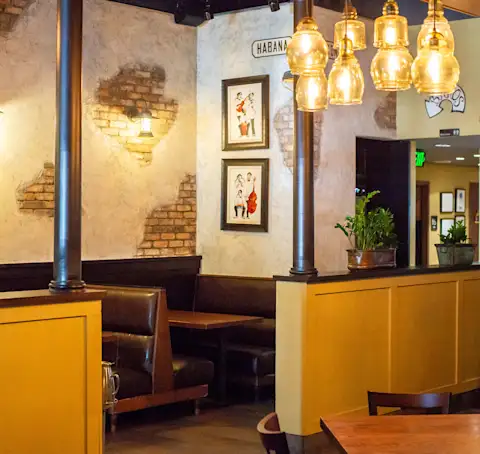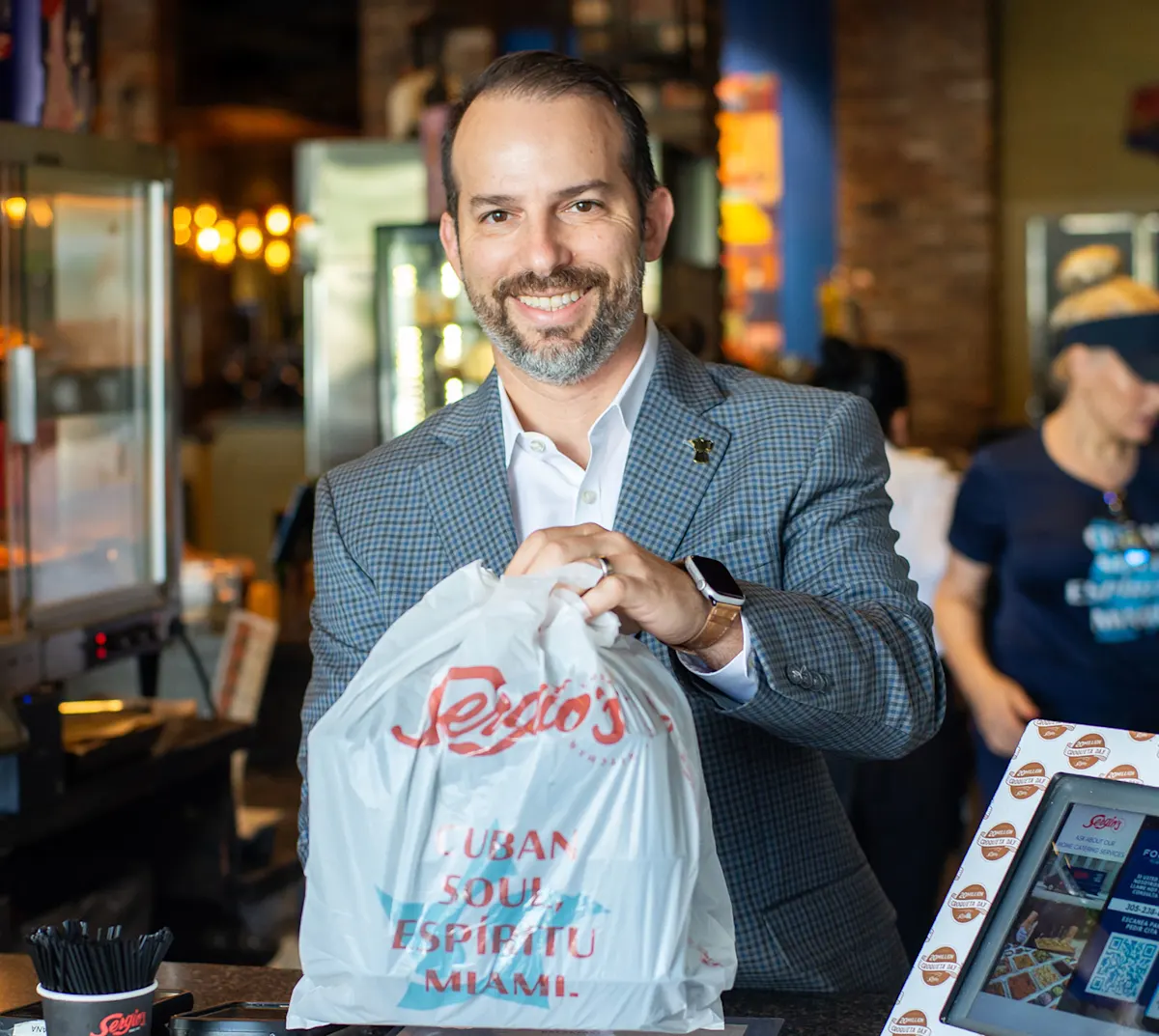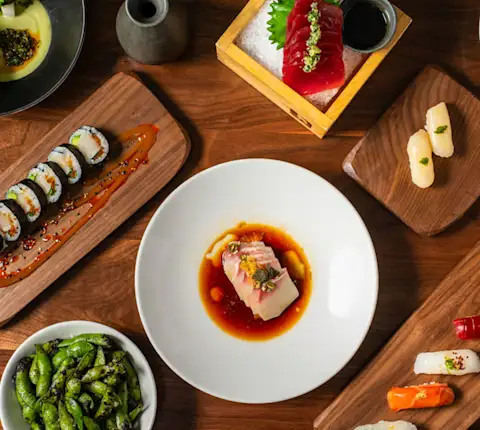Traditional family recipes put Sergio’s Restaurant on the map back in 1975, when Blanca Cabrera and her mother opened a Cuban sandwich shop on Bird Road in Miami, Florida. While the sandwiches were a hit, they quickly shifted to a sit-down restaurant concept that served comida casera, which loosely translates to “homemade comfort food,” with a focus on authentic Cuban dishes like ropa vieja (shredded stewed beef), carne con papa (chunks of meat and potatoes in a tomato-based sauce), and vaca frita (fried shredded beef topped with onions).
Nearly half a century later, the restaurant still serves those same family recipes, but thanks to its third-generation owner, Carlos Gazitua, the business has found a way to modernize while keeping tradition alive.
“I grew up in the restaurant doing dishes and helping out, then I went away for college and law school,” says Gazitua. “I didn’t have any plans to go into the restaurant industry, but my mom and grandma always hoped I would come back and continue their legacy.”
His family eventually convinced him to join the family business after law school, but Gazitua wanted to add his own fingerprint to the brand.

“They had the secret sauce, but my goal was to grow the business and find ways for Sergio’s to adapt to the world around us,” says Gazitua, who always loved his family’s traditional Cuban food, but found it could be too heavy to keep up a healthy lifestyle.
So the first thing the young entrepreneur did was roll out the La Flaca menu. “La Flaca,” which means “skinny girl,” was created around the idea of the working mom who wanted to stay close to her heritage but also share healthy, Cuban-inspired dishes with her family. The menu includes an array of options under 500 calories with less than 500mg of sodium that can easily be adapted to dietary restrictions.
“It’s a fun twist on authentic Cuban cuisine made with high-quality food,” says Gazitua. “Instead of the usual beloved white rice, you can have more nutritious cauliflower rice, and there are more vegetable options — but you still feel like you’re eating abuela’s cooking.”
"We’ve found ways to build Sergio’s beyond restaurant walls so people can view us as a brand that's aligned with their lifestyle."
Dishes like keto-friendly stuffed bell peppers with chicken ropa vieja and cauliflower rice, and a vegetarian chickpea fricassée became part of the new Sergio’s — a place where everyone in the family, no matter what generation they are part of, can gather together to enjoy a Cuban meal customized to their liking and needs.
“The new menu additions were immediately well received, so then we started looking at where we could improve the experience in other parts of the menu,” says Gazitua. That’s when they decided to boldly switch from fried empanadas to baked empanadas — something that was unheard of at the time.
“We were one of the first places in Miami to make the switch, and everyone thought we were crazy,” says Gazitua. “But we knew the quality was better, and it was a much healthier route. We are owners that eat at our own restaurants and so do our kids, so we wanted what would ultimately be best for our family and community in the long term.” And now, many other restaurants have followed suit.

Of course, the restaurant has also incorporated some fun, less-healthy twists into the menu, like a cafe con leche cold-foam iced latte with Maria cookie crumbles (the Oreo of the Latin world) and Abuela’s French toast made with Cuban bread and coconut flakes drizzled with guava syrup.
“Over the years we evolved into what we like to call the ‘spirit of Miami,’ where we are keeping our Cuban roots, but embracing things like tequeños, which are traditionally Venezuelan, and other Latin pastries that are found in the melting pot that is the Magic City,” says Gazitua, who notes that it’s important to take into consideration how Miami has evolved since they first started out in the 1970s.
Menu additions aren’t the only way Sergio’s has evolved with its customers. They’ve also tapped into the growing fast-casual market, where diners may be looking to get a Cuban food fix, but don’t have time for a full sit-down experience. Enter Sergio’s GO, which can be found at airports, arenas, and college campuses across South Florida.
”We’ve found ways to build Sergio’s beyond restaurant walls so people can view us as a brand that's aligned with their lifestyle,” says Gazitua. “We’re no longer in the restaurant business — we’re in the food business… the ultimate idea is to build a brand that when people are looking for Cuban food, we can be exactly what they think of.”
With six full-service restaurants and eight Sergio’s GO concepts (and counting), Gazitua has even more entrepreneurial plans up his sleeve. In fact, he’s created a membership program called Sergio’s Plus. For $10 a month, members get access to secret menus, exclusive frozen croquetas for home use, sneak peek invites, specialty collaborations with other local brands, and more.
“Over the years we evolved into what we like to call the ‘spirit of Miami,’ where we are keeping our Cuban roots, but embracing things like tequeños, which are traditionally Venezuelan, and other Latin pastries that are found in the melting pot that is the Magic City."
Community has always been a big part of the ethos at Sergio’s and working with other local brands has been a great way for the restaurant to support those around them. Currently, members of Sergio’s Plus can redeem a secret menu pizza from local, family-owned Frankie’s Pizza — a fresh pie that’s topped with plantains straight from the Sergio’s kitchen.
“It’s a way to keep things fun and interesting for our fan base while being able to include other businesses that we’ve cherished through the years,” says Gazitua.
But no matter how much Sergio’s Restaurant grows and changes, there’s one thing customers can always count on, and that’s the original comida casera recipes and authentic dishes that will never, ever change or disappear.
“We've always been a concept that’s focused on family,” says Gazitua. “It’s important to stay relevant, but we know traditions are just as valuable.”
Order from Sergio’sPHOTO CREDIT: Justin Namon






